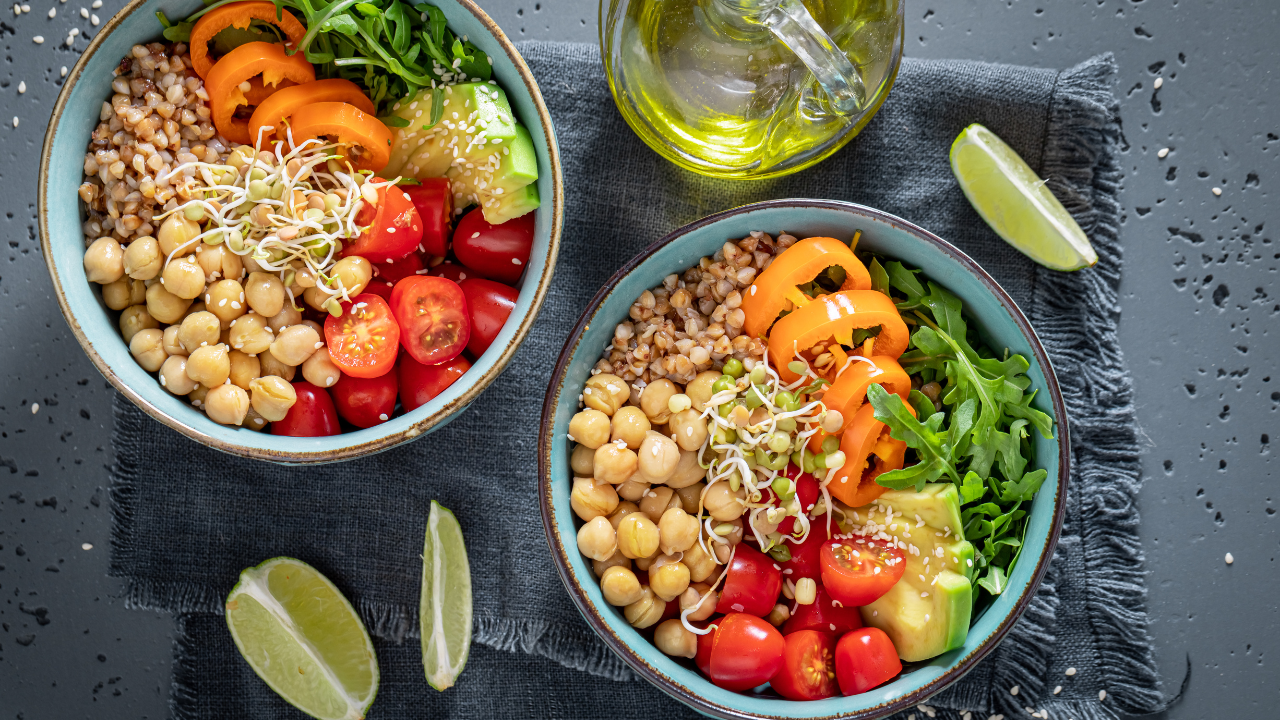What is Nutrition By Addition?
When you set a goal to pursue a healthier lifestyle, your first impulse might be to cut out certain foods. Unfortunately, this approach tends to be unsustainable (not to mention miserable). Good news - there is another approach to healthy eating that does not involve rules or restriction.
Allow me to introduce you to a concept known as “nutrition by addition”, a method of incorporating nutritious foods without sacrificing the joy that should accompany the eating experience.
Table of contents:
What is nutrition by addition?
Nutrition by addition is an approach to healthful eating that involves adding nutrient-dense foods to your plate rather than eliminating (aka subtracting). Nutrition by addition allows for flexibility and enjoyment, making it much more sustainable than dieting and restricting, which have shockingly low success rates.
You may have also heard of the concept “all foods fit”, and this ties in nicely with nutrition by addition. Because truly, unless you have an allergy or intolerance or the food has been contaminated, all foods truly can fit into a balanced, healthful lifestyle.
Nutrition by addition is often touted by intuitive eating dietitians, as this approach goes hand in hand with gentle nutrition, one of the principles of intuitive eating. You can learn more about intuitive eating and gentle nutrition in this post.
Why cutting out foods doesn’t work
Does nutrition by addition sound too good to be true? Like, how can it be healthy to allow yourself to eat cookies and pizza?
When you picture “healthy eating”, you may envision a diet of plain chicken breast, salads without dressing, and cauliflower-based desserts. And while there is nothing inherently wrong with eating these types of foods, many people find that only allowing “healthy” foods (as defined by diet culture) only leaves them with more cravings at best and disordered eating and eating disorders at worst.
Our bodies are super smart and they have many compensatory mechanisms in place to protect us when we restrict our food intake. When we diet, there are hormonal and psychological changes that happen to keep us safe. Because the thing is, our body does not know if we are restricting because we are in a famine or if we are just doing it in the name of “health”. It just knows that it needs to compensate so that we don’t become malnourished.
This does not mean that I recommend a diet solely of donuts and cheeseburgers. That wouldn’t feel good either. It does not need to be one or the other - the “healthy” food or the “unhealthy” food. You can enjoy both. And by allowing those previously off-limits foods into your diet, you will likely find that you don’t crave them as strongly.
How to incorporate nutrition by addition
Ditch the binary thinking
The first step to incorporate nutrition by addition is to ditch binary thinking when it comes to food. Remove the labels of “good” or “bad”, “healthy” or “unhealthy”. There is not a “right” or “wrong” food choice - it is more about your “why” behind making the choice.
Rather than viewing foods as “healthy” or “unhealthy”, consider what the food will offer you. Will it provide you carbs for energy? Some protein to keep you full? A bit of both? Maybe the food in question isn’t super nutrient dense, but it tastes amazing and it will bring you joy. It is okay to eat foods for reasons beyond just physical nourishment. Enjoying our food actually plays a huge role in satisfaction and fullness.
Consider protein, fiber, and fats
Protein, fat, and fiber are three nutrients that help us stay fuller for longer. You may have noticed that if you eat a meal or snack without them, you find yourself feeling hungry rather quickly.
Now, it is important for me to remind you that not every single thing that we eat needs to be loaded in protein, fat, and fiber. Sometimes we will eat meals or snacks without them and that is okay. Remember, nutrition by addition is not a diet and you cannot do it “wrong”. The addition of these nutrients is simply a guideline, not a rule.
Examples of protein-rich foods include:
Examples of fiber-rich foods include:
Fruits and vegetables
Beans and legumes
Nuts and seeds
Quinoa
Examples of foods with unsaturated fats include:
Nuts and seeds
Oils (olive, canola, avocado)
Fatty fish
Olives
Avocado
Related post: How Much Protein Do You Actually Need?
Related post: Are You Eating Enough Fiber?
Examples of nutrition by addition
Add breakfast to your routine each morning.
Add protein to each meal and snack.
Add more fiber to your meals and snacks.
Add more fruits and vegetables.
Add a glass of water with each meal.
Add pre- and post-workout snacks to fuel your muscles.
Notice how the word “add” is included in each of these examples. Here are a few more specific real-life scenarios:
Add bell pepper, onion, and fresh tomato to frozen pizza.
Add frozen peppers and onions to scrambled eggs.
Add chia seeds or flax seeds to a smoothie for extra fiber.
Add broccoli or peas to boxed macaroni and cheese.
Add a side salad on pizza night.
Add a Greek yogurt and berries to a busy morning routine.
Add a lentil or chickpea pasta for a protein boost.
Bottom line - what is nutrition by addition?
Nutrition by addition is a way of eating the prioritizes adding nutrient-rich foods to your diet rather than restricting and cutting foods out. Dieting (which almost always involves eliminating foods or food groups) is almost always unsustainable in the long term. On the contrary, nutrition by addition is a method that you can incorporate for life that honors your health while still allowing the foods that bring you joy.
What is your favorite way to practice nutrition by addition? Leave a comment below.
Disclaimer: this post is for informational and educational purposes only and is not a substitute for professional medical advice.



































